Conflict Zones
Pakistan launches Operation Bunyan Marsoos: What we know so far | India-Pakistan Tensions News
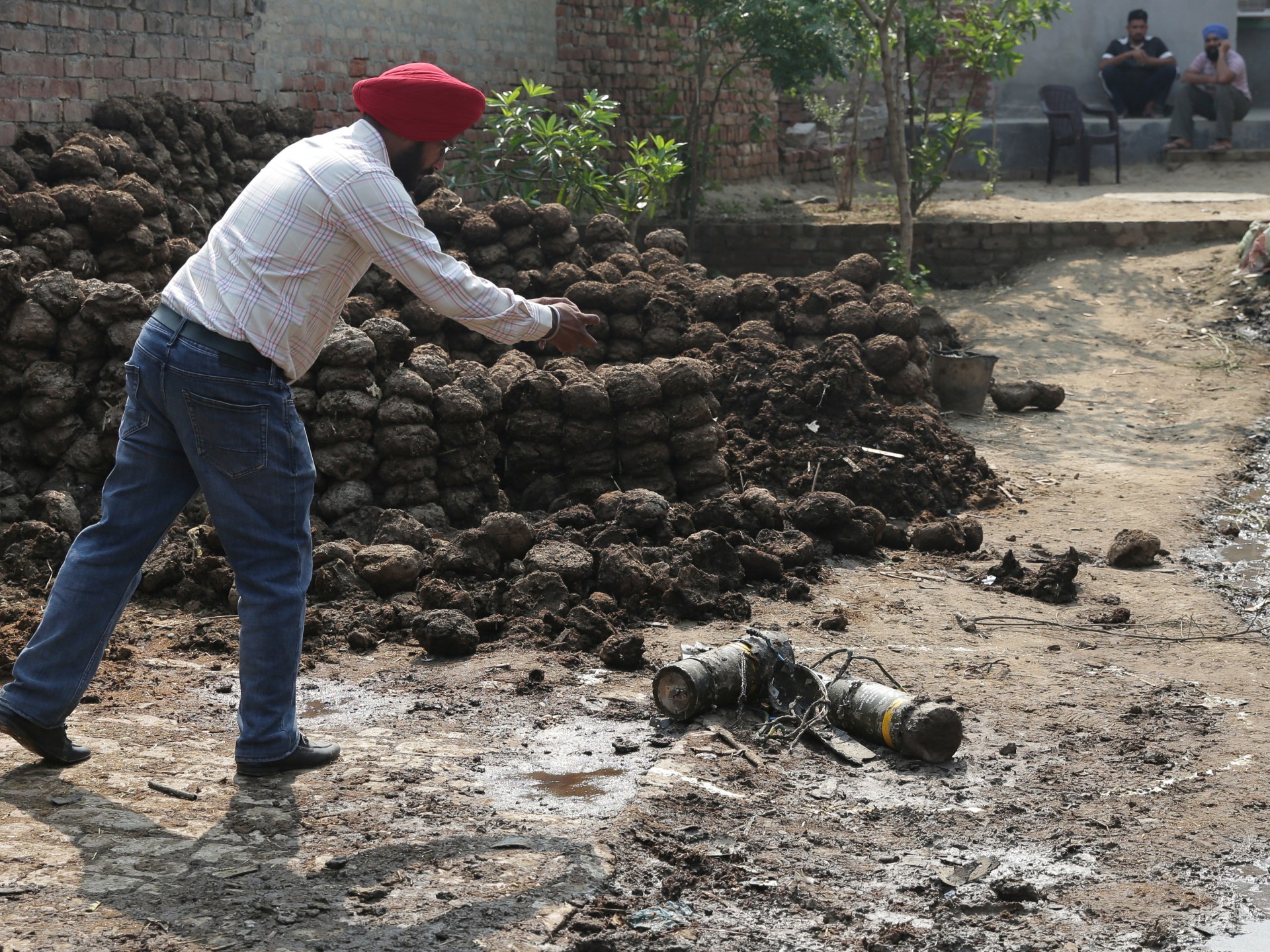
Islamabad, Pakistan – India and Pakistan fired missiles at each other’s military bases on Saturday morning, the latest escalation in their rapid drift towards an all-out war.
Pakistan accused India of carrying out attacks inside its territory for the fourth consecutive night, launching ballistic missile strikes on at least three air bases. Islamabad said that in response, it launched a major military campaign, “Operation Bunyan Marsoos” (Arabic for “a structure made of lead”) targeting at least six Indian military bases.
India, in turn, accused Pakistan of being the aggressor. Indian military officials claimed Pakistan had targeted several Indian military bases and that its missiles into Pakistani territory were in response.
Yet, regardless of who hit the other first on May 10, the very fact that India and Pakistan had struck each other’s military bases over such a wide swath of territory, well beyond Kashmir – the disputed region that they each partly control – means that the conflict has now veered into almost unknown territory.
Never have the South Asian rivals attacked each other on this scale outside the four wars they have fought.
Here is what we know so far about India’s attacks, Pakistan’s response, what both countries and global powers like the United States are saying, and the background to this intensifying conflict.

What happened on the morning of May 10, according to Pakistan?
Pakistan said that India launched a salvo of drones into Pakistan, followed by ballistic missile strikes on at least three major airbases.
The Pakistani bases India targeted are:
Nur Khan airbase: Located near Chaklala, Rawalpindi, it serves as a key operational and training hub. It houses important Pakistan Air Force commands, and supports transport, logistics and VIP flight operations.
Murid airbase: Located in Chakwal, roughly 120km (75 miles) from Islamabad. It is a vital forward-operating base for the Pakistan Air Force. It plays a crucial role in air defence and combat readiness.
Rafiqui airbase: Located in Shorkot, Punjab, the base hosts fighter squadrons.
Pakistan said that in response, it launched aerial attacks against multiple Indian military bases. The bases known to have been targeted are:
Udhampur airbase: Located in Indian-administered Kashmir, Udhampur is also the headquarters of the Indian Army’s Northern Command.
Pathankot airbase: The base in Indian Punjab is a central part of India’s frontline air force operations and was targeted by armed fighters in a 2016 attack in which six Indian soldiers were killed. India blamed that attack on the Pakistan-based Jaish-e-Mohammad.
Drangyari artillery gun position: Drangyari is in Indian-administered Jammu and Kashmir.
Uri field support depot: Uri, in Indian-administered Kashmir, is also home to a major Indian Army base that was attacked in 2016 by armed fighters who killed 19 Indian soldiers. India, which blamed Pakistan-based Jaish-e-Mohammad for the attack, launched what it described as “surgical strikes” in Pakistan-administered Kashmir.
Nagrota: The town in Indian-administered Kashmir is home to a storage site for the Brahmos missiles jointly designed and made by India and Russia.
Beas: Located in Indian Punjab, the site is a storage facility for the Brahmos missile.
Adampur air base: Located in Indian Punjab, the base is home to an S-400 missile defence system that India bought from Russia.
Bhuj air base: The base is located in Gujarat, the home state of Indian Prime Minister Narendra Modi.
What has India said?
At a media briefing, Indian Foreign Secretary Vikram Misri accused Pakistan of provocations and escalations, claiming that New Delhi was only responding to its neighbour’s actions.
He was joined by Colonel Sofia Qureshi of the Indian Army and Wing Commander Vyomika Singh of the Indian Air Force, who shared New Delhi’s version of events.
Pakistan, Qureshi said, used “drones, long-range weapons, loitering munitions and fighter aircrafts to target civilian areas and military infrastructure”.
“Pakistan military also resorted to air intrusions using drones and firing of heavy calibre weapons along the Line of Control,” she said. Loitering munitions, also known as suicide drones, are remote-controlled and designed to crash into their targets. The Line of Control is the de facto border between Indian and Pakistani-administered Kashmir.
While India said it had shot down most incoming missiles and drones, Qureshi and Singh conceded that the air force bases in Udhampur, Pathankot, Adampur and Bhuj did suffer “limited damage”.
India, however, rejected suggestions that any bases had suffered any significant damage, with the military releasing time-stamped photos of the facilities in support of its assertion. Pakistan’s military had on Thursday claimed that the Udhampur and Pathankot bases had been “destroyed.”
Indian officials said at least five people had been killed by Pakistani missile fire on Saturday.
What else happened on May 10?
As the neighbours traded missile fire and allegations, US Secretary of State Marco Rubio spoke with General Syed Asim Munir, Pakistan’s army chief and widely regarded as the country’s most powerful figure, as well as with the Indian foreign minister, S Jaishankar.
According to the US State Department, Rubio urged both parties to seek ways to “deescalate” and offered American assistance in launching constructive dialogue to avoid further conflict.
How did India and Pakistan get to the brink of war?
Pakistan’s military response on Thursday followed four days of consecutive Indian attacks inside its territory and came two weeks after a deadly assault on tourists in the scenic town of Pahalgam in Indian-administered Kashmir on April 22.
The attack killed 26 men, all civilians. India blamed armed groups it alleges are backed by Pakistan, a charge Islamabad has denied, calling instead for an “impartial, transparent” investigation that New Delhi has rejected.
Multiple witness accounts suggest the gunmen segregated the men from the women, then selected and killed non-Muslims.
India initiated strikes on May 7, targeting areas inside Pakistan and Pakistan-administered Kashmir. It claimed to have destroyed “terrorist infrastructure” and eliminated at least “100 terrorists”.
It called its attacks Operation Sindoor, a reference to the vermilion – sindoor in Hindi – the red pigment many married Hindu women apply to their foreheads. The mission’s name was an allusion to the manner in which gunmen killed tourists in Pahalgam.
Pakistan reported that the Indian strikes killed 33 people, including several children, and injured more than 50. It denied that any of the dead were fighters, as India claimed.
As the attacks unfolded, Pakistan deployed its air force in response, engaging in a battle with the Indian Air Force (IAF). Pakistan’s military claimed it downed five Indian jets, including three Rafales, the French-made aircraft considered the IAF’s most advanced assets. India has neither confirmed nor denied the losses.
Drone warfare intensifies
India responded by deploying drones and loitering munitions on May 9 and 10, hitting at least a dozen targets across Pakistan, including major urban centres such as Karachi, Lahore and Rawalpindi.
India said the drone strikes were in response to Pakistan’s use of drones, a claim Islamabad continues to reject.
“There is no credence to their claims. They continue to lie. Their allegation is false. Otherwise, where is their evidence?” Lieutenant General Ahmed Sharif Chaudhry, Pakistan’s military spokesperson, told Al Jazeera during a news briefing in Rawalpindi on Friday.
He added that Pakistan’s response to “Indian aggression” would come at a “time, method, and place of our choosing”.
That time came on the morning of May 10.
What does Operation Bunyan Marsoos mean?
Pakistan’s operation is titled Bunyan Marsoos, an Arabic phrase that translates as “a structure made of lead”.
The phrase originates from the Quran: “Truly God loves those who fight in His cause in battle array, as if they were a solid cemented structure.”
In its Quranic context, the phrase symbolises unity and strength among believers fighting for a righteous cause.
What comes next?
Experts have repeatedly warned of the need for immediate de-escalation between the nuclear-armed neighbours before the situation becomes “irreversible”.
India said on May 10 that it was willing to stop the cycle of escalation if Pakistan reciprocated.
But Kamran Bokhari, senior director at the New Lines Institute for Strategy and Policy, said Indian strikes on Pakistani airbases had dramatically escalated the conflict.
“With Pindi being hit and other airbases such as the one in Sargodha, the war has taken a turn for the worse,” he told Al Jazeera. “We are now looking at a much bigger-scale war.”
Muhammad Faisal, a South Asia security analyst at the University of Technology Sydney, said Pakistan was left with little choice but to respond forcefully.
“Pakistan can employ its latest jets in standoff mode or launch long-range missile strikes on Indian airbases that bypass air defences. During the last three days, both sides have significantly mapped each other’s air defences, and now the next round of escalation is here,” he told Al Jazeera.
Conflict Zones
India and Pakistan agree ceasefire: What does it mean? | India-Pakistan Tensions News
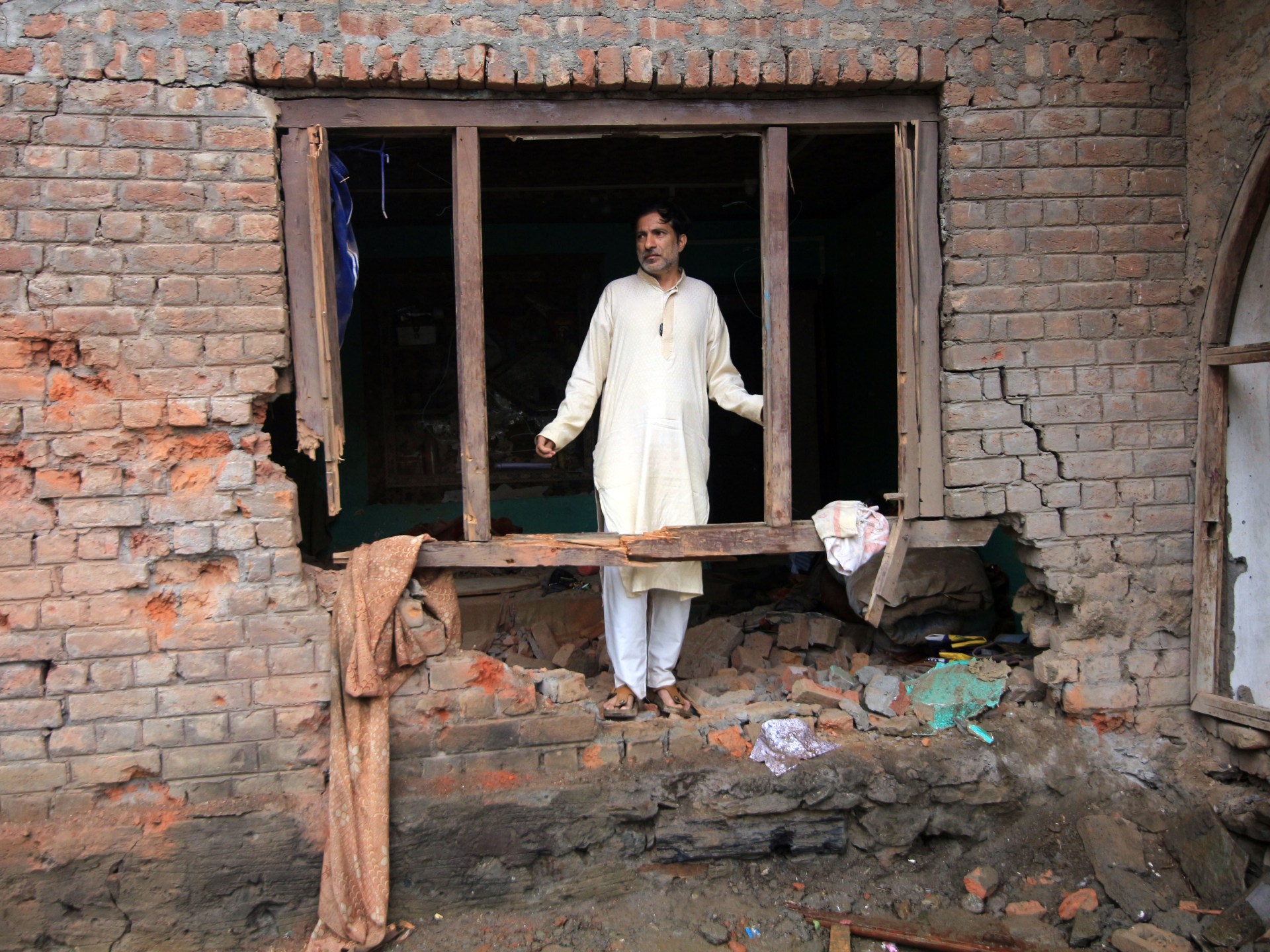
India and Pakistan have reached a ceasefire agreement following a brief period of hostilities over the past few days, United States President Donald Trump announced on Saturday.
Earlier on Saturday, the two neighbours targeted each other’s military sites as Pakistan launched “Operation Bunyan Marsoos” after three of its own airbases were hit by India’s air-to-surface missiles. Both sides claimed to have intercepted most projectiles, but also admitted that some strikes caused damage.
More than 60 people have been reported killed since India launched missiles under “Operation Sindoor” on Wednesday, which it said targeted “terrorist camps” in Pakistan and Pakistan-administered Kashmir. Pakistan has confirmed the killing of 13 people on its side of the Line of Control (LoC), the de facto border between the two countries dividing the disputed Kashmir region.
The strikes had raised fears of a wider conflict between the two nuclear-armed neighbours. While international mediation has resolved disputes between India and Pakistan before, it remains to be seen if this ceasefire will hold and whether people will be able to relax.
What has been agreed upon by India and Pakistan?
“After a long night of talks mediated by the United States, I am pleased to announce that India and Pakistan have agreed to a full and immediate ceasefire,” Trump wrote on his Truth Social platform on Saturday.
“Congratulations to both Countries on using Common Sense and Great Intelligence. Thank you for your attention to this matter!” Multiple countries are understood to have been involved in these talks.
Pakistan’s Foreign Minister Ishaq Dar and Indian Foreign Secretary Vikram Misri confirmed the ceasefire shortly after.
“It was agreed between them that both sides would stop all fighting and military action on land, air and sea with effect from 17:00 Indian Standard Time today [11:30 GMT],” Misri said in a short statement.
“Instructions have been given on both sides to give effect to this understanding. The directors general of military operations will talk again on May 12 at 12:00.”
India and Pakistan have also activated military channels and hotlines following the deal, according to Dar.
Will the two countries engage in further talks now?
US Secretary of State Marco Rubio also said India and Pakistan had agreed to start talks on a “broad set of issues at a neutral site”.
However, in a statement on social media, India’s Ministry of Information and Broadcasting partially denied this, stating: “There is no decision to hold talks on any other issue at any other place.”
Subir Sinha, director of the South Asian Institute at SOAS University of London, told Al Jazeera that broader bilateral talks would be a very challenging process as India had previously rejected such a development.
“One of the arguments about this so-called robust policy towards Pakistan that Modi’s government had adopted was that it was no longer possible to sit down and discuss a broad and long-term commitment to resolve issues,” Sinha said.
Therefore, this would mark a reversal of the Indian government’s position and could play out poorly with the right wing in India, whose members have been calling for an attack on Pakistan.
Sinha said both the Indus Waters Treaty, which India suspended its participation of and the Simla Agreement, which Pakistan threatened to pull out of, will need to be fully resumed and “to be looked [at] perhaps as bases for moving forward”.
Were India and Pakistan actually at war?
Officially, no. Despite intense military exchanges, including missile strikes, drone attacks, and artillery shelling, neither government made an official declaration of war.
India and Pakistan instead characterised their military actions as specific coordinated “military operations”.
Pakistan on Saturday launched a retaliatory assault it named “Bunyan Marsoos”, Arabic for “Wall of Lead”, just days after India initiated “Operation Sindoor“, responding to a deadly attack on tourists in Pahalgam on April 22, which it blamed on Pakistan-based armed groups.
However, that is not unusual for these two countries. They have not officially declared war in previous major conflicts, even as thousands of soldiers and civilians died.

Has third-party intervention solved disputes between India and Pakistan before?
Yes. Third-party mediation has resolved disputes since 1947, when the subcontinent split through partition and India and Pakistan fought their first war. After a yearlong war over ownership of the princely state of Jammu and Kashmir, a United Nations-brokered ceasefire effectively split Kashmir between Indian- and Pakistan-administered regions in 1948.
The 1965 Indo-Pakistani War ended with the Tashkent Declaration in January 1966, following mediation by the erstwhile Soviet Union. The accord saw Indian Prime Minister Lal Bahadur Shastri and Pakistani President Ayub Khan agree to pull back to pre-war positions and restore diplomatic and economic ties.
During the 1999 Kargil War, Pakistani troops crossed the LoC and seized Indian positions. Then-US President Bill Clinton convinced Pakistani Prime Minister Nawaz Sharif to withdraw, warning of international isolation.
In 2002, then-US Secretary of State Colin Powell claimed he and his team had mediated the end of a tense stand-off along the LoC following an attack on the Indian Parliament in December 2001. The following June, Powell said that through negotiations, he had received assurances from President Pervez Musharraf of Pakistan that “infiltration activity” across the LoC would cease and that armed groups would be dismantled on Pakistani territory.
What constitutes a war?
There is no single definition. International humanitarian law, such as the Geneva Conventions, uses the term “international armed conflict” instead of “war”, defining it more broadly as any use of armed forces between states, regardless of whether either side calls it a “war”.
In modern international law, all uses of force are categorised as “armed conflict” regardless of justifications such as self-defence, according to Ahmer Bilal Soofi, an advocate in the Supreme Court of Pakistan who also specialises in international law.
The suspension of a treaty can also signal the start of war, he added. India suspended its participation in the landmark Indus Waters Treaty with Pakistan on April 23, a move Pakistan described as a “hostile act”.
“Political scientists normally say a war only exists after fighting becomes quite intense – normally 1,000 battle deaths,” said Christopher Clary, assistant professor of political science at the University at Albany. “For governments, though, wars exist whenever they say so.”
Experts argue the recent escalation in military actions by India and Pakistan was as much about signalling strength as they were about military objectives, and was also part of a broader effort to manage domestic and international perception.
Sean Bell, a United Kingdom-based military analyst, said much of the current rhetoric from both India and Pakistan is deliberately aimed at domestic audiences. Each side is “trying to make clear to their own populations that there is a robust military response, and that they’re retaliating for any actions”, he told Al Jazeera. But this tit-for-tat dynamic, Bell warned, risks becoming difficult to stop once it starts.
Why are countries reluctant to formally announce a war?
Following the adoption of the UN Charter in 1945, “no country claims ‘war’ or declares ‘war’ as, legally speaking, it is viewed as unlawful use of force”, Soofi told Al Jazeera.
Officially, being in a state of armed conflict triggers international legal obligations, such as following the rules of armed conflict and being accountable for war crimes.
In the latest India-Pakistan standoff, both sides portrayed the other as the aggressor, insisting it should be the one to de-escalate.
The absence of a formal, universally accepted definition of war means countries can engage in sustained military operations without ever officially declaring war. Ambiguity also allows governments to frame military actions in ways that suit their political or diplomatic goals.
For example, Russia has consistently described its 2022 invasion of Ukraine as a “special military operation”, despite large-scale troop deployments, air strikes and territorial occupation. Similarly, the US referred to the Korean War in the 1950s as a “police action” and framed its long-term activities in Afghanistan and Iraq as “counterterrorism operations”. Israel also often uses terms like “military campaign” or “operation” for cross-border offensives, such as “Operation Protective Edge” during its 2014 war in Gaza.
Conflict Zones
Qatar leads Syria search for bodies of US hostages killed by ISIL: Report | Investigation News
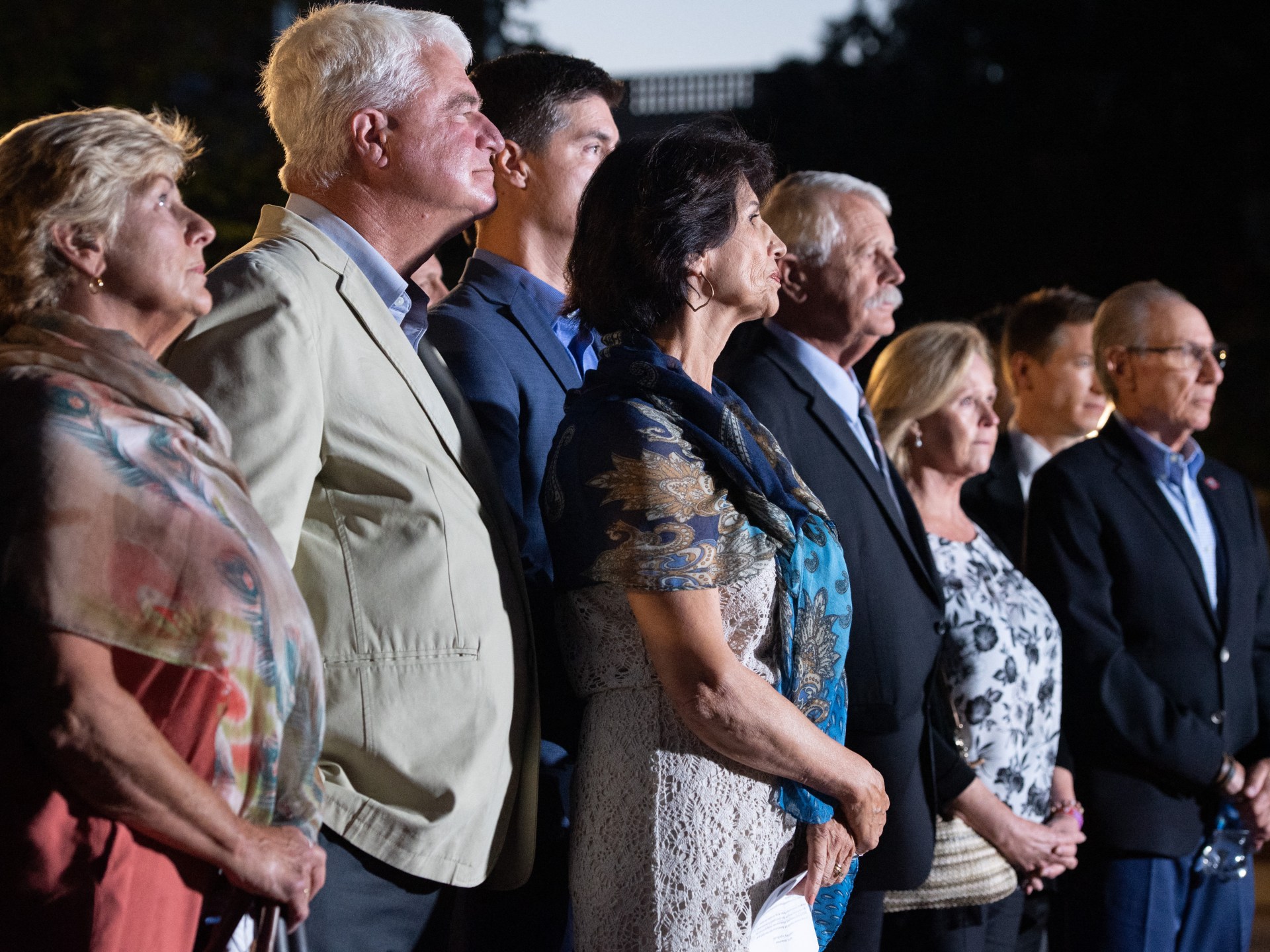
The search and rescue group has found the remains of three unidentified bodies so far, according to anonymous sources.
A Qatari mission has begun searching for the remains of United States hostages killed by the ISIL (ISIS) armed group in Syria about 10 years ago, according to the Reuters news agency, citing two sources briefed on the mission.
Qatar’s International Search and Rescue Group began the search on Wednesday, with the help of several US nationals who wished to remain anonymous, the news agency reported.
So far, three unidentified bodies have been found by the group, according to the sources. The mission’s focus was on locating the body of aid worker Peter Kassig, who was beheaded by ISIL in 2014 in Dabiq, northern Syria, a Syrian security source told Reuters.
US aid worker Kayla Mueller as well as US journalists James Foley and Steven Sotloff were among other Western hostages killed by ISIL. Foley and Sotloff were confirmed killed in 2014. Mueller’s killing was confirmed in 2015.
“We’re grateful for anyone taking on this task and risking their lives in some circumstances to try and find the bodies of Jim and the other hostages,” said Diane Foley, James Foley’s mother. “We thank all those involved in this effort.”
The Qatari mission is getting under way as US President Donald Trump prepares to visit Doha and other Gulf Arab capitals next week and as Syria’s new government seeks relief from sanctions imposed by the US.
Washington, along with some other Western governments, has said it will wait to see how the new authorities exercise their power and ensure human rights before lifting any sanctions.
The United Kingdom last month removed its sanctions on 12 Syrian government entities, including the Ministries of Defence and Interior and the General Intelligence Directorate.
Longstanding commitment
ISIL once controlled vast swaths of Syria and Iraq, ruling over millions of people. At the peak of its power from 2014-2017, it beheaded numerous people in captivity, including Western hostages, and released videos of the killings.
A coalition of more than 80 countries, led by the US, was formed to fight ISIL in September 2014.
The war against the group officially ended in March 2019, when US-backed and Kurdish-led fighters of the Syrian Democratic Forces captured the eastern Syrian town of Baghouz, the last sliver of land ISIL controlled.
Plans for the Qatari mission were discussed during a visit to Washington in April by Qatari Prime Minister Sheikh Mohammed bin Abdulrahman bin Jassim Al Thani and State Minister Mohammed Al Khulaifi – a trip also designed to prepare for Trump’s visit to Qatar, one of the sources told Reuters.
Another person familiar with the issue said there had been a longstanding commitment by successive US administrations to find the remains of the murdered US nationals, and that there had been multiple previous “efforts with US government officials on the ground in Syria to search very specific areas”.
The person did not elaborate, the report said. But the US has had hundreds of soldiers deployed in northeastern Syria that have continued pursuing ISIL’s remnants.
The person said the remains of Kassig, Sotloff and Foley were most likely located in this part of the country. Mueller’s case was different as she was in the custody of ISIL leader Abu Bakr al-Baghdadi, the person added.
Two ISIL members, both former UK citizens who were part of a cell dubbed the “Beatles” that beheaded US hostages, are serving life prison sentences in the US.
Conflict Zones
Could India, Pakistan use nuclear weapons? Here’s what their doctrines say | India-Pakistan Tensions News
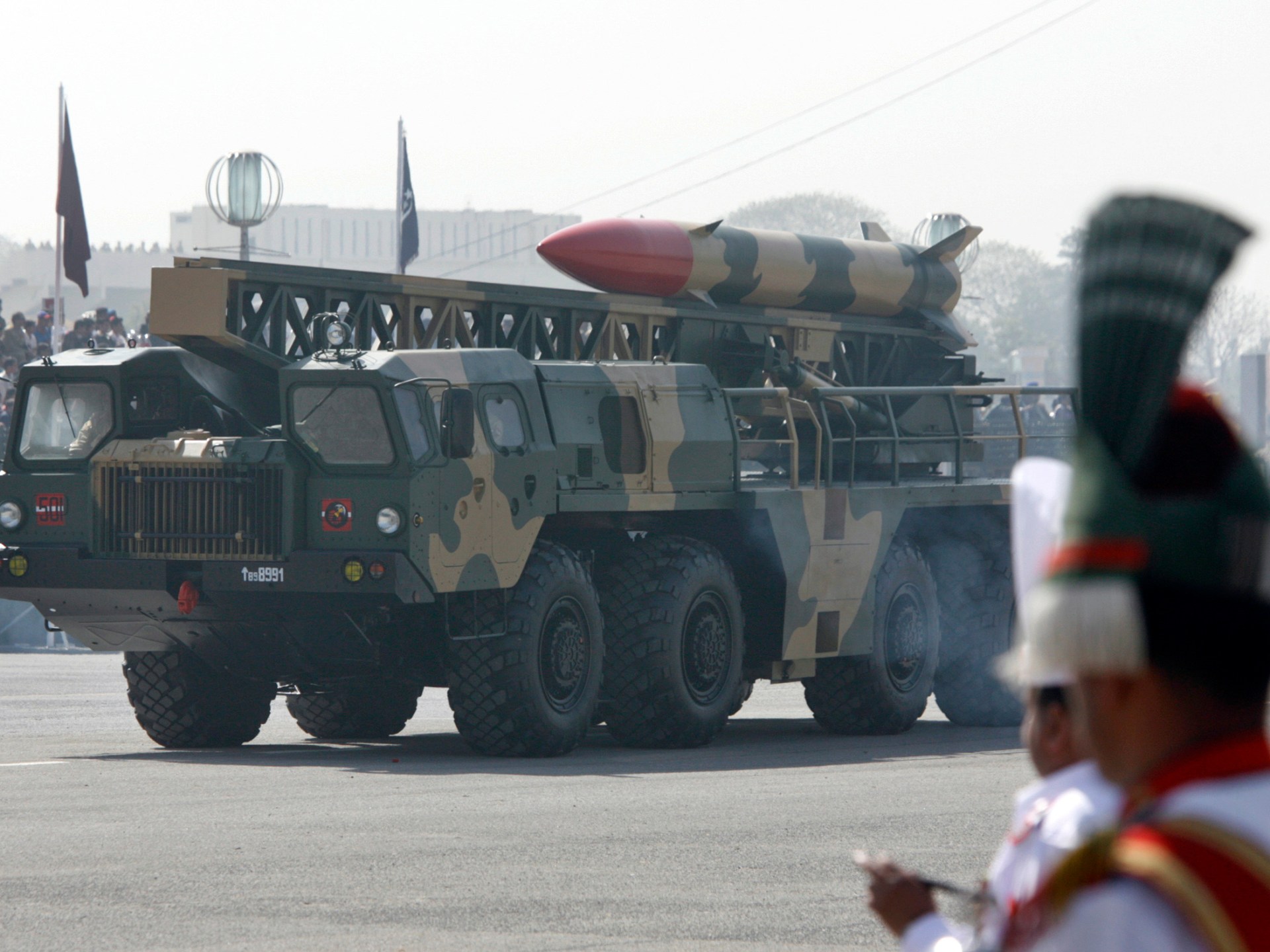
Pakistan said it struck multiple Indian military bases in the early hours of Saturday, May 10, after claiming that India had launched missiles against three Pakistani bases, marking a sharp escalation in their already soaring tensions, as the neighbours edge closer to an all-out war.
Long-simmering hostilities, mostly over the disputed region of Kashmir, erupted into renewed fighting after the deadly April 22 Pahalgam attack in Indian-administered Kashmir that saw 25 tourists and a local guide killed in an armed group attack. India blamed Pakistan for the attack; Islamabad denied any role.
Since then, the nations have engaged in a series of tit-for-tat moves that began with diplomatic steps but have rapidly turned into aerial military confrontation.
As both sides escalate shelling and missile attacks and seem on the road to a full-scale battle, an unprecedented reality stares not just at the 1.6 billion people of India and Pakistan but at the world: An all-out war between them would be the first ever between two nuclear-armed nations.
“It would be stupid for either side to launch a nuclear attack on the other … It is way short of probable that nuclear weapons are used, but that does not mean it’s impossible,” Dan Smith, director of the Stockholm International Peace Research Institute, told Al Jazeera.
So, how did we get here? What are the nuclear arsenals of India and Pakistan like? And when – according to them – might they use nuclear weapons?
How tensions have spiralled since April 22
India has long accused The Resistance Front (TRF) – the armed group that initially claimed credit for the Pahalgam attack, before then distancing itself from the killings – of being a proxy for the Lashkar-e-Taiba, a Pakistan-based armed group that has repeatedly targeted India, including in the 2008 Mumbai attacks that left more than 160 people dead.
New Delhi blamed Islamabad for the Pahalgam attack. Pakistan denied any role.
India withdrew from a bilateral pact on water sharing, and both sides scaled back diplomatic missions and expelled each other’s citizens. Pakistan also threatened to walk out of other bilateral pacts, including the 1972 Simla Agreement that bound the neighbours to a ceasefire line in disputed Kashmir, known as the Line of Control (LoC).
But on May 7, India launched a wave of missile attacks against sites in Pakistan and Pakistan-administered Kashmir. It claimed it hit “terrorist infrastructure”, but Pakistan says at least 31 civilians, including two children, were killed.
On May 8, India launched drones into Pakistani airspace, reaching the country’s major cities. India claimed it was retaliating, and that Pakistan had fired missiles and drones at it. Then, for two nights in a row, cities in India and Indian-administered Kashmir reported explosions that New Delhi claimed were the result of attempted Pakistani attacks that were thwarted.
Pakistan denied sending missiles and drones into India on May 8 and May 9 – but that changed in the early hours of May 10, when Pakistan first claimed that India targeted three of its bases with missiles. Soon after, Pakistan claimed it struck at least seven Indian bases. India has not yet responded either to Pakistan’s claims that Indian bases were hit or to Islamabad’s allegation that New Delhi launched missiles at its military installations.

How many nuclear warheads do India and Pakistan have?
India first conducted nuclear tests in May 1974 before subsequent tests in May 1998, after which it declared itself a nuclear weapons state. Within days, Pakistan launched a series of six nuclear tests and officially became a nuclear-armed state, too.
Each side has since raced to build arms and nuclear stockpiles bigger than the other, a project that has cost them billions of dollars.
India is currently estimated to have more than 180 nuclear warheads. It has developed longer-range missiles and mobile land-based missiles capable of delivering them, and is working with Russia to build ship and submarine missiles, according to the Center for Strategic and International Studies (CSIS).
Pakistan’s arsenal, meanwhile, consists of more than 170 warheads. The country enjoys technological support from its regional ally, China, and its stockpile includes primarily mobile short- and medium-range ballistic missiles, with enough range to hit just inside India.

What’s India’s nuclear policy?
India’s interest in nuclear power was initially sparked and expanded under its first prime minister, Jawaharlal Nehru, who was eager to use it to boost energy generation. However, in recent decades, the country has solidified its nuclear power status to deter its neighbours, China and Pakistan, over territorial disputes.
New Delhi’s first and only nuclear doctrine was published in 2003 and has not been formally revised. The architect of that doctrine, the late strategic analyst K Subrahmanyam, was the father of India’s current foreign minister, S Jaishankar.
Only the prime minister, as head of the political council of the Nuclear Command Authority, can authorise a nuclear strike. India’s nuclear doctrine is built around four principles:
No First Use (NFU): This principle means that India will not be the first to launch nuclear attacks on its enemies. It will only retaliate with nuclear weapons if it is first hit in a nuclear attack. India’s doctrine says it can launch retaliation against attacks committed on Indian soil or if nuclear weapons are used against its forces on foreign territory. India also commits to not using nuclear weapons against non-nuclear states.
Credible Minimum Deterrence: India’s nuclear posture is centred around deterrence – that is, its nuclear arsenal is meant primarily to discourage other countries from launching a nuclear attack on the country. India maintains that its nuclear arsenal is insurance against such attacks. It’s one of the reasons why New Delhi is not a signatory to the Nuclear Non-Proliferation Treaty (NPT), as it maintains that all countries uniformly disarm before it does the same.
Massive Retaliation: India’s retaliation to a first-strike from an aggressor will be calculated to inflict such destruction and damage that the enemy’s military capabilities will be annihilated.
Exceptions for biological or chemical weapons: As an exception to NFU, India will use nuclear weapons against any state that targets the country or its military forces abroad with biological or chemical weapons, according to the doctrine.
What is Pakistan’s nuclear policy?
Strategic Ambiguity: Pakistan has never officially released a comprehensive policy statement on its nuclear weapons use, giving it the flexibility to potentially deploy nuclear weapons at any stage of a conflict, as it has threatened to do in the past. Experts widely believe that from the outset, Islamabad’s non-transparency was strategic and meant to act as a deterrence to India’s superior conventional military strength, rather than to India’s nuclear power alone.
The Four Triggers: However, in 2001, Lieutenant General (Retd) Khalid Ahmed Kidwai, regarded as a pivotal strategist involved in Pakistan’s nuclear policy, and an adviser to the nuclear command agency, laid out four broad “red lines” or triggers that could result in a nuclear weapon deployment. They are:
Spatial threshold – Any loss of large parts of Pakistani territory could warrant a response. This also forms the root of its conflict with India.
Military threshold – Destruction or targeting of a large number of its air or land forces could be a trigger.
Economic threshold – Actions by aggressors that might have a choking effect on Pakistan’s economy.
Political threshold – Actions that lead to political destabilisation or large-scale internal disharmony.
However, Pakistan has never spelled out just how large the loss of territory of its armed forces needs to be for these triggers to be set off.
Has India’s nuclear posture changed?
Although India’s official doctrine has remained the same, Indian politicians have in recent years implied that a more ambiguous posture regarding the No First Use policy might be in the works, presumably to match Pakistan’s stance.
In 2016, India’s then-Defence Minister Manohar Parrikar questioned if India needed to continue binding itself to NFU. In 2019, the present Defence Minister Rajnath Singh said that India had so far strictly adhered to the NFU policy, but that changing situations could affect that.
“What happens in the future depends on the circumstances,” Singh had said.
India adopting this strategy might be seen as proportional, but some experts note that strategic ambiguity is a double-edged sword.
“The lack of knowledge of an adversary’s red lines could lead to lines inadvertently being crossed, but it could also restrain a country from engaging in actions that may trigger a nuclear response,” expert Lora Saalman notes in a commentary for the Stockholm International Peace Research Institute (SIPRI).
Has Pakistan’s nuclear posture changed?
Pakistan has moved from an ambiguous policy of not spelling out a doctrine to a more vocal “No NFU” policy in recent years.
In May 2024, Kidwai, the nuclear command agency adviser, said during a seminar that Islamabad “does not have a No First Use policy”.
As significantly, Pakistan has, since 2011, developed a series of so-called tactical nuclear weapons. TNWs are short-range nuclear weapons designed for more contained strikes and are meant to be used on the battlefield against an opposing army without causing widespread destruction.
In 2015, then-Foreign Secretary Aizaz Chaudhry confirmed that TNWs could be used in a potential future conflict with India.
In reality, however, experts warn that these warheads, too, can have explosive yields of up to 300 kilotonnes, or 20 times that of the bomb that destroyed Hiroshima. Not only could such explosions be disastrous, but some experts say that they might well affect Pakistan’s own border populations.
-

 Middle East2 days ago
Middle East2 days agoKey takeaways: Documentary names alleged killer of Al Jazeera’s Abu Akleh | Crime News
-
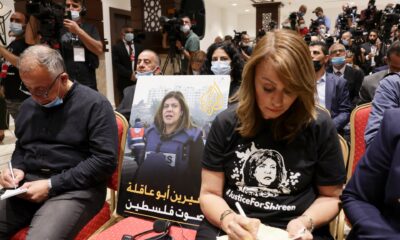
 Middle East2 days ago
Middle East2 days agoDocumentary sheds light on Biden’s reactions to Shireen Abu Akleh’s killing | Occupied West Bank News
-
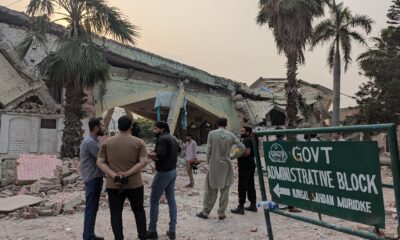
 Conflict Zones2 days ago
Conflict Zones2 days agoInside Muridke: Did India hit a ‘terror base’ or a mosque? | India-Pakistan Tensions
-

 Conflict Zones1 day ago
Conflict Zones1 day ago‘Missiles in skies’: Panic in Indian frontier cities as war clouds gather | India-Pakistan Tensions News
-

 Lifestyle1 day ago
Lifestyle1 day agoKids author Mo Willems and The Pigeon stare down the future in a new book
-

 Lifestyle2 days ago
Lifestyle2 days agoTransgender troops being moved out of the military under new Pentagon order
-

 Europe1 day ago
Europe1 day agoPope Leo XIV urges cardinals to make themselves ‘small’ in first mass as pontiff
-
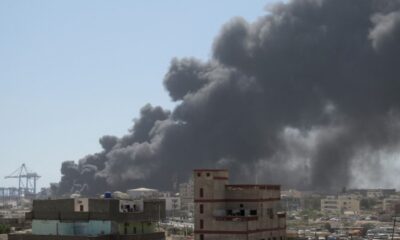
 Middle East1 day ago
Middle East1 day agoUAE denies supplying Sudan paramilitaries with Chinese arms | Sudan war News




